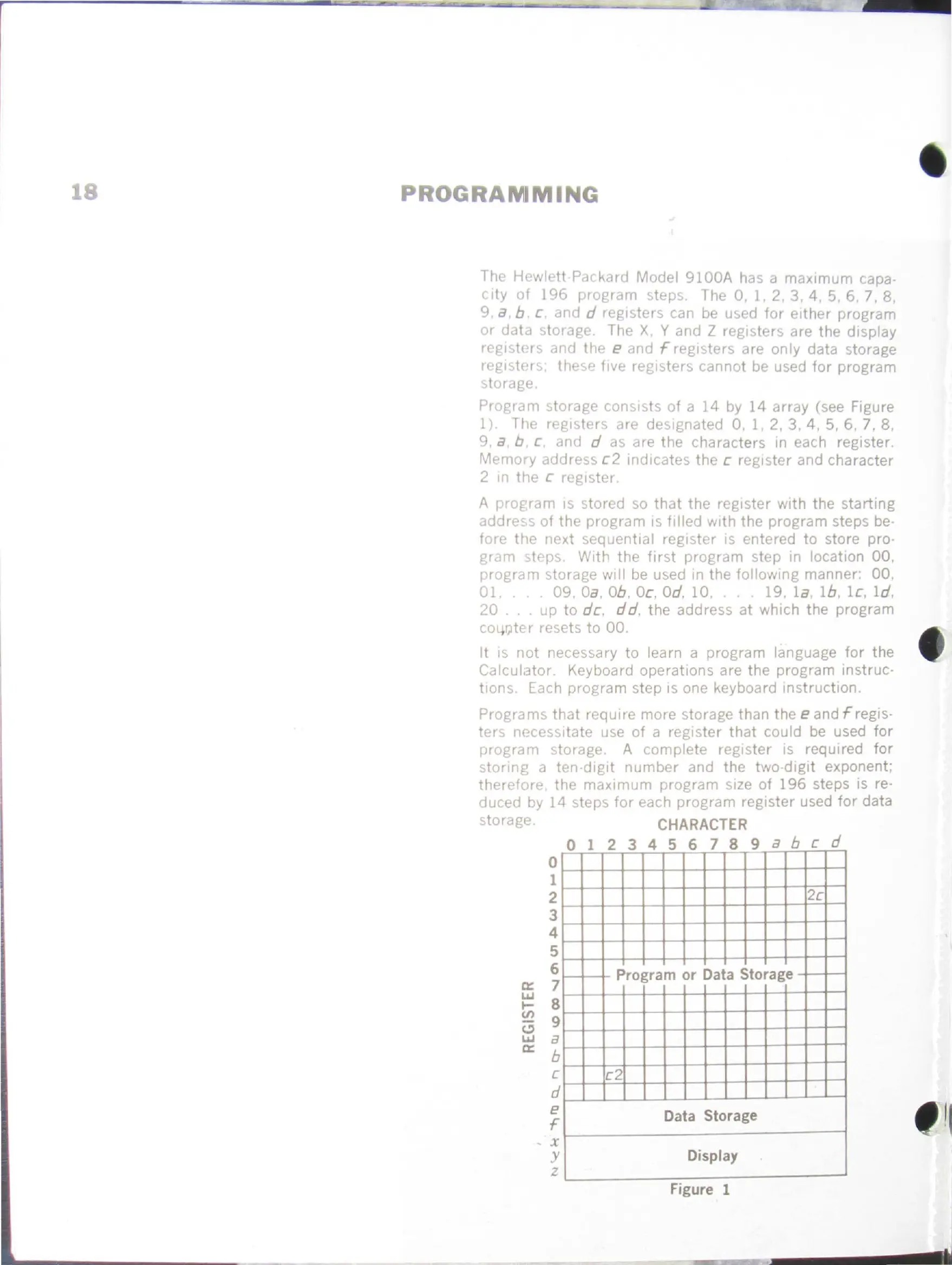8
R
GRAMIMI
The Hewlett Packard Model 9100A has a maximum capa-
c tty
of
196 program steps. The 0, 1,
2,
3, 4,
5,
6,
7,
8,
9, a, b c, and d regtsters can
be
used
for
etther program
or
data storage. The
X,
Y and Z regtsters are the display
regtsters and the e and F regtsters are only data storage
regtster~.
these ftve regtsters cannot be used
for
program
storage.
Program stor age conststs
of
a
14
by
14
array (see Figure
1 ). The regtsters are destgnated 0,
1,
2,
3, 4,
5,
6, 7, 8,
9,
a,
b,
c, and d as are the characters in each register.
Memot"Y address
c2
ind1cates the c regtster and character
2 tn
the
c regtster.
A
program
ts
stored so
that
the regtster with the
starting
addres.s
of
the
program
ts
ftlled
w1th
the program steps be-
fore
the
next sequenttal regtster
ts
entered
to
store pro-
gram
steps. Wtth
the
first
program step in location 00,
program storage wtll be used
tn
the followtng manner: 00,
01,
...
09.
Oa.
Ob,
Oe,
Od.
10
....
19,
la,
1b,
lc,
ld,
20
...
up
to
dc
, d d.
th
e address
at
which the program
coql;lter resets
to
00.
lt
ts
not
necessary
to
learn a program language for the
Calculator. Keyboard operations are the program instruc-
tlons.
Each program step is one keyboard instruction.
Programs
that
require more storage than
th
e e and f regis-
ters necess1tate use of a register
that
could be used
for
program
storage. A complete reg1ster is required
for
stonng
a ten-dtgtt
number
and the two-digit exponent;
therefore.
the
maxtmum program stze
of
196 steps is re-
duced by
14
steps
for
each program register used
for
data
~o~ge.
CHARACTER
o 1 2 3 4 5 6 7 8 9 a b c d
0
1
2
2c
3
4
5
6
C:t:
7
Program
or
Data
Storage
La.l
8
·-
(f)
9
--
<-'
La.l
a
':t:
b
c
c2
d
e
f
Data
Storage
...
X
y
Display
z
Figure 1

